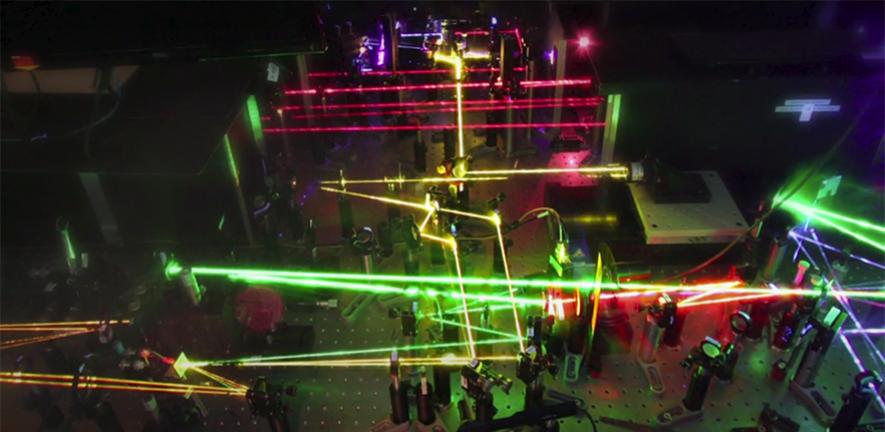2021-09-29 英国・ケンブリッジ大学

・ ケンブリッジ大学が、有機太陽電池のエネルギー変換効率を低減させる、電池内のエネルギー損失の問題を解決することで、シリコン太陽電池により近い変換効率を達成。
・ 半透明、安価でフレキシブルな有機太陽電池はアプリケーションの範囲が広く、建物外装への巻き付けや屋内照明での効率的なエネルギー利用等、シリコン太陽電池には無い利用方法が可能。製造時の環境的負荷もはるかに低い。
・ 標準的なシリコン太陽電池ではエネルギー変換効率が 20~25%である一方、有機太陽電池では研究室の条件下で約 19%、実際の環境下では約 10~12%にとどまる。これを一因として、近年有機太陽電池の商業開発が停滞している。
・ 有機太陽電池では、フォトン(光子)の照射により電子が励起して正孔を後に残し、励起した電子と正孔が再び結合して励起子の状態となる。このような励起子の形成が克服できれば、電子と正孔を電流として捕獲することができる。
・ しかし、再結合により電子がエネルギーを失い正孔状態に戻ることで電池は電子を損失する。シリコンに比べてカーボンベース材料では電子と正孔の引きつけ合う力が強いため、有機太陽電池では再結合が起こりやすく、変換効率に影響している。このため、電子と正孔の再結合を回避する電子のドナー(供与)とアクセプター(受容)材料の利用が重要となる。
・ 本研究では、分光法とコンピューターモデルを組合せて有機太陽電池で起こるフォトンの吸収から再結合までのメカニズムを追跡し、三重項励起子が主要な原因であることを特定。
・ 有機太陽電池では電子と正孔による三重項励起子の形成がエネルギー的に好ましいため解決が困難な問題であるが、電子を供与・受容する材料間の分子の強力な相互作用を作り出すことで、再結合による三重項励起子の形成が起こらないよう電子と正孔の分離状態を保持可能なことを確認した。
・ コンピューターモデルでは、有機太陽電池の構成要素をこのように調整することで、三重項励起子への再結合の期間を一桁低減し、より効率的な電池作動が可能となることを提示。
・ エネルギー損失経路を抑制する分子間の強力な相互作用を持つ次世代のドナーとアクセプター材料の設計のガイドラインを作成。20%を超える変換効率達成に向けた明確な戦略を提供する。
URL: https://www.cam.ac.uk/research/news/researchers-identify-and-clear-efficiency-hurdle-for-organic-solar-cells
<NEDO海外技術情報より>
(関連情報)
Nature 掲載論文(アブストラクトのみ:全文は有料)
The role of charge recombination to triplet excitons in organic solar cells
URL: https://www.nature.com/articles/s41586-021-03840-5
Abstract
The use of non-fullerene acceptors (NFAs) in organic solar cells has led to power conversion efficiencies as high as 18%1. However, organic solar cells are still less efficient than inorganic solar cells, which typically have power conversion efficiencies of more than 20%2. A key reason for this difference is that organic solar cells have low open-circuit voltages relative to their optical bandgaps3, owing to non-radiative recombination4. For organic solar cells to compete with inorganic solar cells in terms of efficiency, non-radiative loss pathways must be identified and suppressed. Here we show that in most organic solar cells that use NFAs, the majority of charge recombination under open-circuit conditions proceeds via the formation of non-emissive NFA triplet excitons; in the benchmark PM6:Y6 blend5, this fraction reaches 90%, reducing the open-circuit voltage by 60 mV. We prevent recombination via this non-radiative channel by engineering substantial hybridization between the NFA triplet excitons and the spin-triplet charge-transfer excitons. Modelling suggests that the rate of back charge transfer from spin-triplet charge-transfer excitons to molecular triplet excitons may be reduced by an order of magnitude, enabling re-dissociation of the spin-triplet charge-transfer exciton. We demonstrate NFA systems in which the formation of triplet excitons is suppressed. This work thus provides a design pathway for organic solar cells with power conversion efficiencies of 20% or more.



